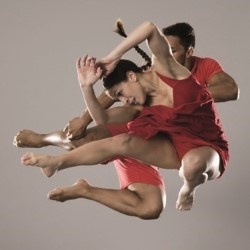BLACK GRACE
Assembly, Roxy, Edinburgh, Scotland
12/08/2014 - 22/08/2014
Production Details
Dance, Physical Theatre and Circus
For their Fringe debut, Black Grace presents a collection of short dance works spanning nearly 20 years including: the iconic Minoi – drawn from Samoan dance traditions and fused with western culture: Human Language (2nd movement) – the first Black Grace work to feature female dancers; and Mother Mother – created for popular New Zealand band Fat Freddy’s Drop.
With an eclectic soundtrack including original Pacific music, Jimi Hendrix and Johann Sebastian Bach, Black Grace is an evening of highly physical dance rich in the story-telling traditions of the South Pacific and expressed with raw finesse, unique beauty and power.
Assembly Roxy (Venue 139)
07:20pm
Aug 12-22
1 hour
Group: New Zealand Season | Black Grace
DATES, TIMES AND PRICES
Venue map
People, story and movement
Review by Dione Joseph 17th Aug 2014
Black Grace is one of New Zealand’s most successful dance companies and if you’re lucky enough to catch one of their shows at this year’s 2014 Edinburgh Fringe you’ll know why.
This is inspired, sculpted, contemporary dance alive with stories. Offering a showcase of excerpts from the company’s 20 year history, each excerpt is given an introduction by the company’s founder Neil Ieremia and the context, personal and specific, locates the work in an intimate manner, establishing a relationship with everyone in the audience, including the babies.
Of the seven dance works three are absolute standouts: Minoi, Human Language and Mother Mother.
Minoi, which opens the hour long show, is a sublime work. Performed by the five male members of the company it weaves together a lightness of touch and traditional Samoan slap dancing to create a powerfully grounded and resonant example of contemporary dance.
The excerpts from Human Language (one of the first shows where Ieremia worked with women) is a complete conversation between men, women and of course, balloons. Humour in choreography is rare and Ieremia creates a space where the visceral bodies can have a conversation beyond politics and polemics and movement that can simply (pun intended) pop!
The concluding piece, Mother Mother, is just as delicately shaped as the opening and as Ieremia points out ‘mothers build you up … But they also break you down’. The choreography was used for a Fat Freddy’s Drop musical video by the same name. The lifts and jumps in this final work are beautifully executed and although there are some near collisions the movement overall appears nearly seamless.
The seven works also include a chance to pay homage to Jimmy Hendrix and Bach; and interestingly, while the latter might have benefitted from seeing how his music was complemented by Samoan slap dancing, it seems that the slap dancing really doesn’t need Morrison other than the inspiration of the opening line: “I stand by a mountain and I cut it down with the side of my hand.”
This collection of vignettes, for indeed each is a story unto its own, offers a glimpse into how the New Zealand dance landscape has changed over the past twenty-years as stories from the Pacific are reclaiming space within the dance world. It may seem at first glance that the choreography favours the men particularly (especially in the second excerpt, Pati Pati) but as the show progresses both the men and women’s performance come into their own, achieving a synthesis between people, story and movement.
This is a New Zealand dance company with an international flair and with an ensemble of experienced and emerging artists it will continue to raise the standards of dance wherever they perform – a must see at this year’s Fringe.
Copyright © in the review belongs to the reviewer





Comments